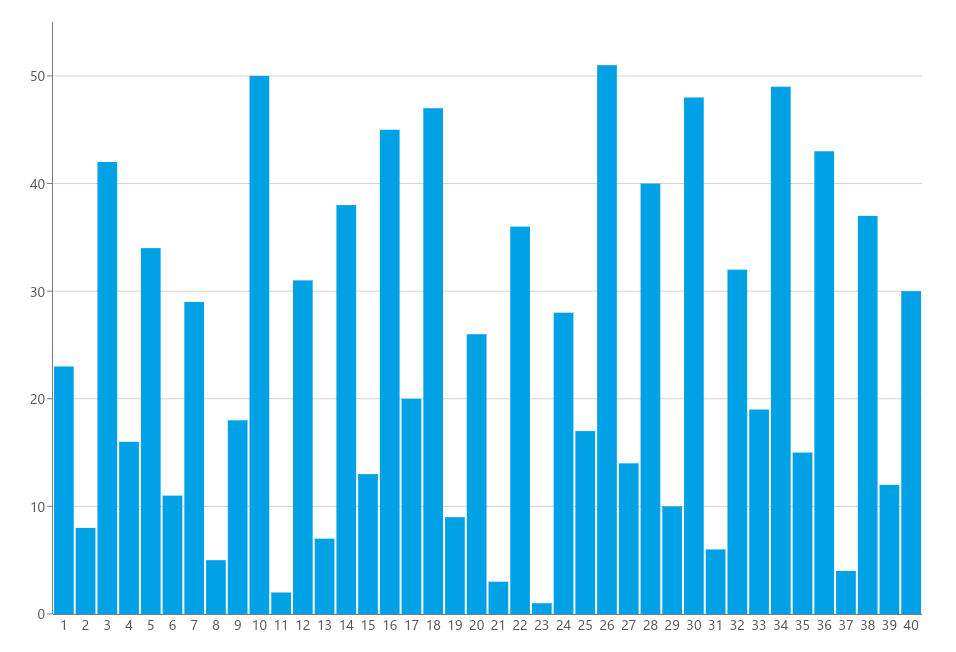JavaScript
Histogram
Visualize a longer set of single values.

Basic Implementation
To render a histogram chart, you first have to set up a container in your HTML.
<div id="histogram"></div>Next in your script file, you need to import the meistercharts package and create a new instance of the histogram chart.
const meistercharts = require("@meistercharts/meistercharts/meistercharts-easy-api");
const chart = meistercharts.createHistogramFromId("barChartStacked");This will render an empty chart with the default styles.
Add data to the chart
To add data to the chart, you need to call the setData- function on the chart instance with your data.
chart.setData({
categories: [
{ label: "1", values: [23] },
{ label: "2", values: [8] },
// ...
{ label: "39", values: [12] },
{ label: "40", values: [30] },
],
});The setData- function will accept an object of the type HistogramData.
Customize the chart style
You can customize how the chart looks by calling the setStyle- function on the chart instance.
chart.setStyle({
barGap: 5,
barSize: 20,
// ...
});The setStyle function accepts an object of the type HistogramStyle.